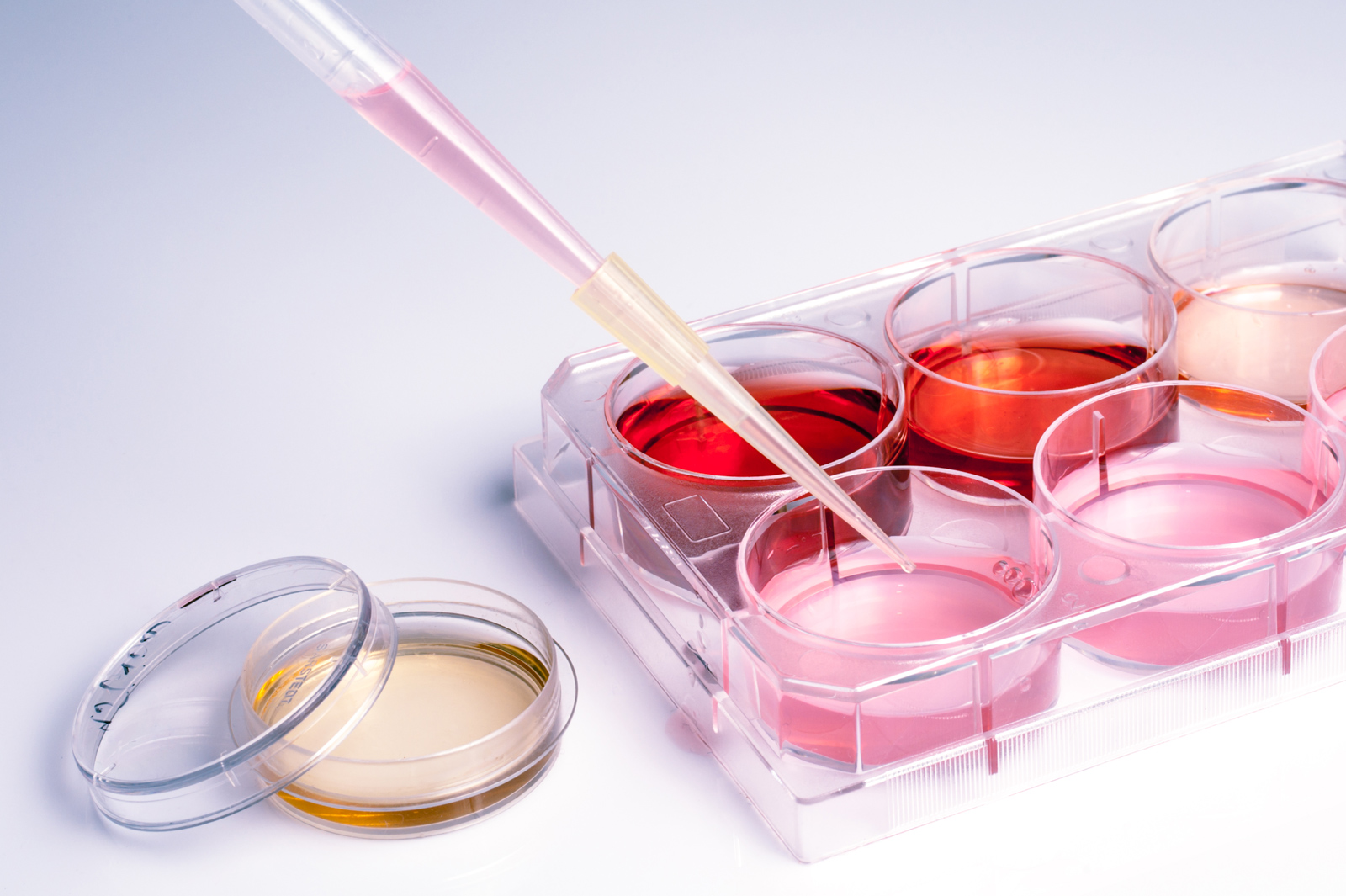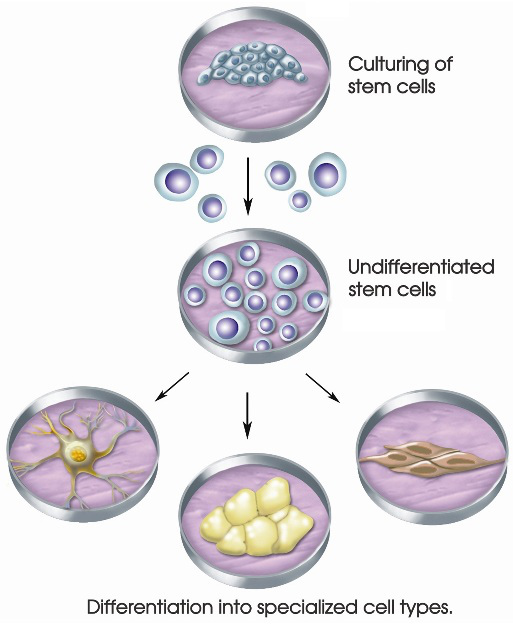Regenerative orthopaedics – stem cell therapy and research

Stem cells and their applications have become one of the most popular topics when it comes to medical sciences. As researches prove the potential of these cells, scientists have been trying to make use of them in different ways, including orthopedics.
WHAT MAKES STEM CELLS DIFFERENT?
The term ‘stem cell’ is now so widely used and misused that in most cases its scientific meaning has been lost and forgotten. By definition, a cell is a stem cell only when it has the capability to differentiate into various types of cells. The cell should be able to renew by itself. These cells have a unique ability to undergo asymmetric cell division: they maintain the stem cell pool and simultaneously create daughter cells that can ultimately transform into multiple tissues.
This is what differentiates stem cells from somatic cells – somatic cells always divide symmetrically and generate two similar daughter cells with the same potential.
When stem cells are activated during disease-repair states or fetal development, they can also encounter symmetrical cell division and rapid proliferation. However, they typically remain more quiescent.
DIVIDING INTO USEFUL CELLS:
When stem cells undergo division, they form progenitor cells. Contrary to the stem cells, progenitor cells turn out to become cells that have more specialized and specific functions. Examples include red blood cells and brain cells. These cells are associated with specialized tissues like cartilage or bone, and this is the reason they are of particular interest to the people related to orthopedics.
Orthopedic surgeons around the world have mainly put their focus on mesenchymal stem cells. The mesenchymal stem cells are taken from living adult tissue, unlike the embryonal stem cells.
Bone marrow stromal cells also fall into the category of mesenchymal stem cells. In the proper environment, bone marrow cells are able to transform into cells that are part of the musculoskeletal system. They can also help in forming ligaments, tendon, articular cartilage, trabecular bone and part of the bone marrow.
Currently, the procedures for stem cell in orthopedics
Currently, the procedures for stem cell in orthopedics are at an experimental phase. These are performed at research centers only as part of controlled clinical experiments.
UNDERSTANDING ADULT STEM CELLS:
Most people think that stem cells cannot be derived from adult tissues. This is incorrect. In fact, there are entire pockets of stem cells in the adult tissues; these pockets can be found mainly in the bone marrow, and the body fat. It is most commonly believed that these stem cells are present to help the healing process of wounded or damaged body tissue. These stem cells found in the adult body can be extracted from various sources as mentioned above. The difference between embryonic stem cells and adult stem cells is that the embryonic ones have the potential to turn into an entire variety of tissues whereas adult stem cells have limited potential to change and differentiate since their properties depend on the part of the body they are extracted from. However, these adult stem cells are sufficient for the current orthopedic research procedures.

WHAT IS THE APPLICATION OF STEM CELLS IN ORTHOPEDICS?
With the progress in modern day technology, the research for orthopedics has extended from being limited to bones to consider the tendons, ligaments, muscles, and cartilages as well. The locomotive role of these muscles and structures make them vulnerable to injuries which is the primary focus of orthopedics. Now, orthopedics deals with the entire variety of injuries and diseases associated with the body’s musculoskeletal system. The lack of vascularity of these musculoskeletal structures make them incapable of healing quickly which leaves behind a need for the orthopedic procedures.
Chronicity is a hallmark of these musculoskeletal injuries. From non-unions and avascular necrosis (AVN) to bone defects, cartilage and tendinosis defects, there is a lack of effective treatment modalities for several musculoskeletal conditions. These are exactly the areas where stem cells are needed in orthopedics since they can be used for developing effective and regenerative medicine and treatments for these conditions.
Stem cells have been used for clinical purposes for the treatment of several cases of AVN, non-unions, bone defects, and for enhancing spinal fusions. The use of these stem cells has proven to be successful and effective for a high proportion of these cases. However, the use of stem cells is still in an experimental phase for enhancing tendon and cartilage healing. Currently, the major uses of stem cells are for the following purposes:
- Treating non-unions and bone fractures.
- Healing tendons or ligaments
- Replacing the degenerative vertebral disks in a body
- Regenerating the articular cartilage found in the arthritic joints.
As more and more knowledge of this procedure of tissue engineering through stem cells is acquired, we will see the extensive use of stem cells in these orthopedic procedures.
WHERE WOULD THESE CELLS COME FROM?
It’s a common question that where would stem cells for orthopedics come from. For all kinds of clinical use, stem cells are taken from the patient’s own bone marrow. They are then injected into the area of the body where they are needed. This is called autologous transplant, and it decreases the risk of rejection, making the surgery successful.
THE PROGRESS:
As the studies are still quite new, we wonder whether there are any clinical applications of stem cells for orthopedics, or is it still confined to labs.
Most of the research that has been done is still on a primary level, including animal studies. There are a few groups around the world that are carrying out preliminary studies on this topic. They have been applying it on human subjects for nonunion and AVN fractures. One of the popular people in this field is Dr. George F. Muschler (Lerner Research Institute in Cleveland, Ohio).
How will Stem Cells Work in the Regeneration Process?
The idea behind the use of stem cells is that once they are in the tissues, they will take the needed nourishment from any nearby vasculature or blood supply. Through this, they will grow and differentiate into the required bone tissue. This bone tissue will use the necrosed tissues surrounding it to put the living bone back to where it belongs hence successfully regenerating the bone and treating the bone condition. Similar procedures are sought to be adopted for the treatment of tendons, muscles, ligaments, and articular cartilage.

STEM CELLS AND THE FUTURE OF ORTHOPEDICS:
It’s important to know what the final goal is. Researchers have been trying to apply this new technique to ultimately be able to regenerate the cartilage. This aim, however, looks a little further off considering the progress at the moment. Surgeons would want that in future, stem cells could be injected into people having early signs of arthritis.
Another aim is to be able to replace or repair chunks of bone that have been damaged or lost because of trauma, like gunshot wounds and other injuries. It will be like placing some kind of scaffolding material on the missing part of the bone, injecting some stem cells, and getting it fixed once the cells grow.
To sum up, there is a lot of potential in this field and many problems can be solved if the ultimate goals are achieved. However, it is evident that the medical world still needs some time for the progress and proper clinical application.

There are no comments published yet.